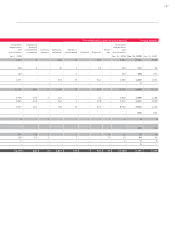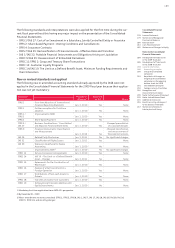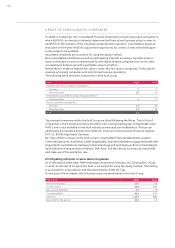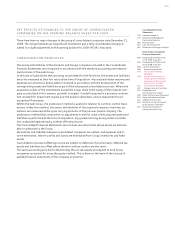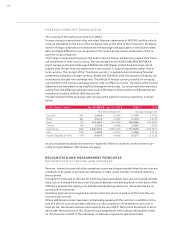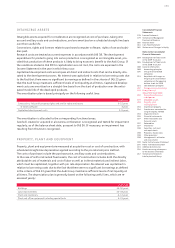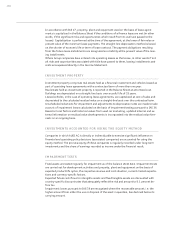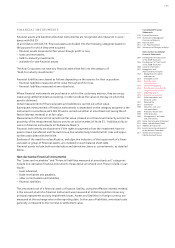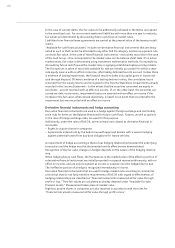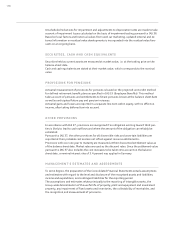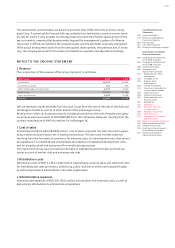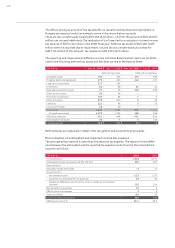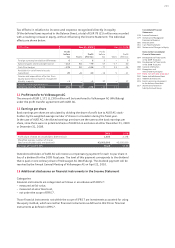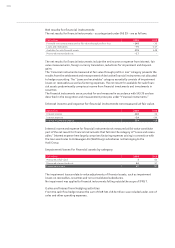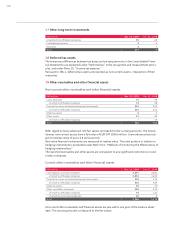Audi 2009 Annual Report Download - page 199
Download and view the complete annual report
Please find page 199 of the 2009 Audi annual report below. You can navigate through the pages in the report by either clicking on the pages listed below, or by using the keyword search tool below to find specific information within the annual report.
196
In the case of current items, the fair values to be additionally indicated in the Notes correspond
to the amortized cost. For non-current assets and liabilities with more than one year to maturity,
fair values are determined by discounting future cash flows at market rates.
Liabilities from financial lease agreements are carried at the present value of the leasing install-
ments.
“Available-for-sale financial assets” include non-derivative financial instruments that are desig-
nated as such or that cannot be allocated to any other IAS 39 category, and are as a general rule
carried at fair value. In the case of listed financial instruments – exclusively securities in the case
of the Audi Group – this corresponds to the market value on the balance sheet date. If no active
market exists, fair value is determined using investment mathematics methods, for example by
discounting future cash flows at the market rate or applying established option pricing models.
The fluctuations in value of securities available for sale are initially accounted for within a sepa-
rate equity reserve with no effect on income, after taking deferred tax into account. Unless there
is evidence of lasting impairment, the financial result includes only capital gains or losses real-
ized through disposal. If there is evidence of a lasting decline in value, the cumulative loss is
removed from the equity reserve and recognized in the Income Statement. Impairments already
recorded in the Income Statement – to the extent that the securities concerned are equity in-
struments – are not reversed with an effect on income. If, on the other hand, the securities con-
cerned are debt instruments, impairment losses are reversed with an effect on income if the
increase in the fair value, when viewed objectively, is based on an event that occurred after the
impairment loss was recorded with an effect on income.
Derivative financial instruments and hedge accounting
Derivative financial instruments are used as a hedge against foreign exchange and commodity
price risks for items on the Balance Sheet and for future cash flows. Futures, as well as options
in the case of foreign exchange risks, are used for this purpose.
Additionally, under the rules of IAS 39, some contracts are classed as derivative financial in-
struments:
–Rights to acquire shares in companies
–Agreements entered into by the Audi Group with approved dealers with a view to hedging
against potential losses from buy-back obligations for leased vehicles.
A requirement of hedge accounting is that a clear hedging relationship between the underlying
transaction and the hedge must be documented and its effectiveness demonstrated.
Recognition of the fair value changes in hedges depends on the nature of the hedging relation-
ship.
When hedging future cash flows, the fluctuations in the market value of the effective portion of
a derivative financial instrument are initially reported in a special reserve within equity, with no
effect on income, and are only recognized as income or expense once the hedged item is due.
The ineffective portion of a hedge is recognized immediately in income.
Derivative financial instruments that are used to hedge market risks according to commercial
criteria but that do not fully meet the requirements of IAS 39 with regard to effectiveness of
hedging relationships are classified as “financial instruments measured at fair value through
profit or loss.” Their fair values are calculated as already detailed under “Available-for-sale
financial assets.” Measurement takes place at market value.
Rights to acquire shares in companies are also reported in accordance with the rules for
“financial instruments measured at fair value through profit or loss.”



